Did You Get the PRP Injection You Thought You Paid For?
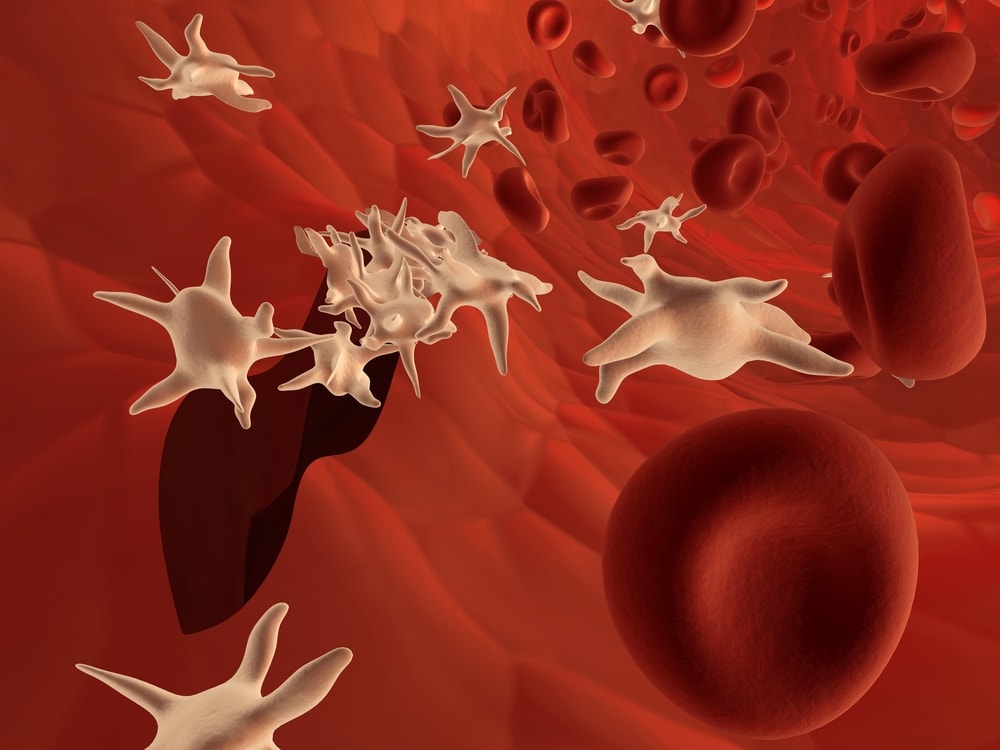
Credit: Shutterstock
I hear almost every day from one patient or another that they already tried PRP. They seem flustered and confused when I say, “Let’s look at the quality of that procedure” and then ask lots of questions for which they have no answers. So let’s dive into a critical concept. How do you make sure that you get the best quality possible PRP injection? Let’s dig in.
What is PRP?
Platelet-rich Plasma (PRP) is created by concentrating blood platelets. These little specialized cell pieces contain growth factors that can help orthopedic healing. To learn more, watch my video below:
PRP Injection Quality?
As an expert in this field of interventional orthobiologics, you can rest assured that if I were to show up at a clinic or review the website of a place that offered PRP, I would end up asking all sorts of questions that would quickly find out if the clinic was delivering low or high-quality care. Now, your first reaction to that statement may be, “What? Low or high quality? I didn’t know there was any difference. Do you mean a PRP shot isn’t the same everyplace I can go?”
In fact, PRP injection quality varies so widely that it’s almost not even the same product between the lowest and highest quality clinics. So how can consumers make sure they’re maximizing the quality of the PRP injection they purchase? By thinking like an expert.
Thinking Like an Expert

I’ve been using PRP in patients since 2005. I’ve written numerous scientific papers, book chapters, and patents on devices and concepts involving platelet-rich plasma. I’ve spent nearly two decades treating tens of thousands of patients with PRP and have developed many new procedures. I’ve taught more than a dozen fellows and dozens of Regenexx affiliates how to use this technology to provide the best results to patients. Today I’m going to teach you how to evaluate the quality of a PRP injection the same way I look at this technology. That means looking at candidacy, blood draw volume, processing, PRP type, dose, and reinjection.
Candidacy
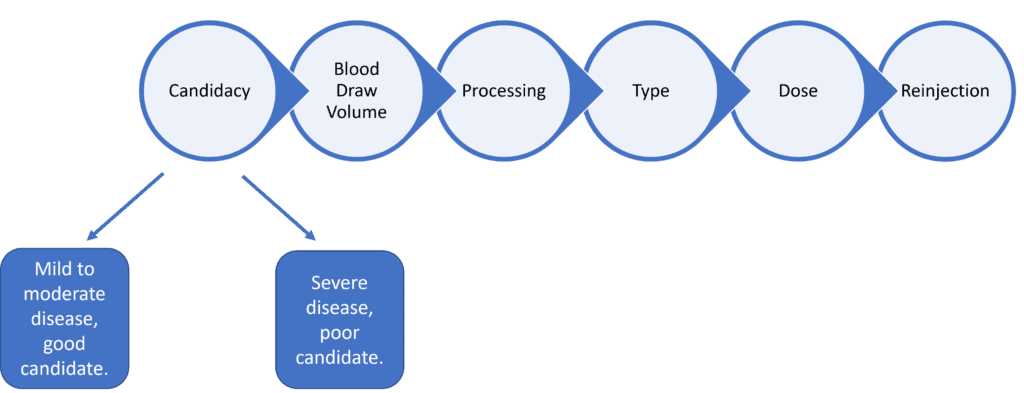
The single thing that separates a money-making operation from a real clinic using PRP is candidacy. Meaning at a clinic focused on profits, you’re a candidate for PRP if your credit card clears. At a real medical clinic, you won’t be offered PRP unless the clinical research or that physician’s extensive experience shows that you’re a good candidate for that technology. Let me explain.
Let’s say you walk into our Regenexx HQ clinic in Colorado with severe knee arthritis. Because of the high failure rate when using PRP in patients with that problem, you’ll be talked out of an injection. Why? The research supports that PRP results in knee arthritis decline with severity. The opposite will happen if you have mild knee arthritis, where PRP works well. The same thing will happen if you have a more severe tendon or ligament tear. In fact, the only exception to that is platelet-based spine procedures which can be effective in patients with more severe disease.
Hence, the first question to ask as a patient is why am I a good candidate for PRP? The doctor should be able to use the research or extensive experience to support that candidacy. If you hear something like, “everyone is a candidate”, then run.
Blood Draw Volume
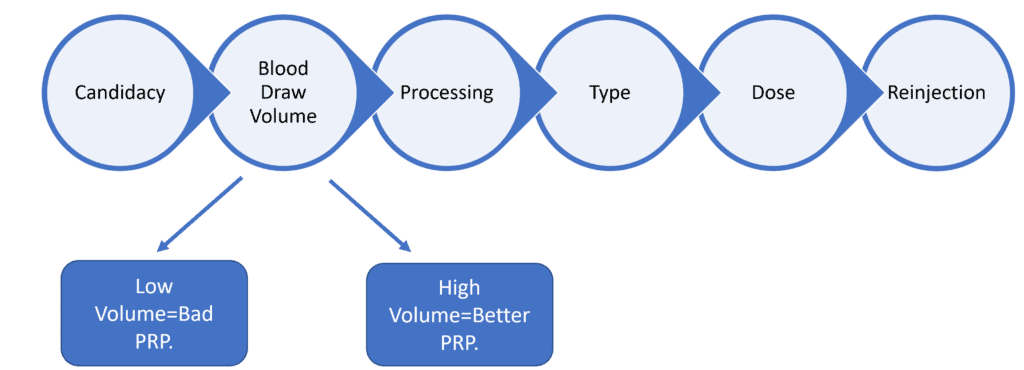
PRP starts with a blood draw from your arm just like giving blood for a diagnostic test. While drawing blood isn’t rocket science, the volumes used here tell an expert quite a bit about the quality of the PRP that the clinic is capable of producing. Why?
Let’s say you’re getting your knee treated at age 50. You show up at the clinic and they take 1 tube of blood to make the PRP. That’s usually about 10 ml.
Your knee will usually take 2-3 ml of PRP. Half of that volume will be wasted, so the PRP that comes out of that process will be at best 2 times more concentrated than the normal platelet concentration in your blood. Hence, without even knowing which PRP kit the clinic is using, since your knee will require at least 10-14X concentration for a real PRP treatment, we know that the clinic is producing inadequate PRP. While I’ll get into dosing later, to get to 2 ml of a 14X PRP, the clinic would have had to take about 6 tubes of blood or 60 ml.
Processing
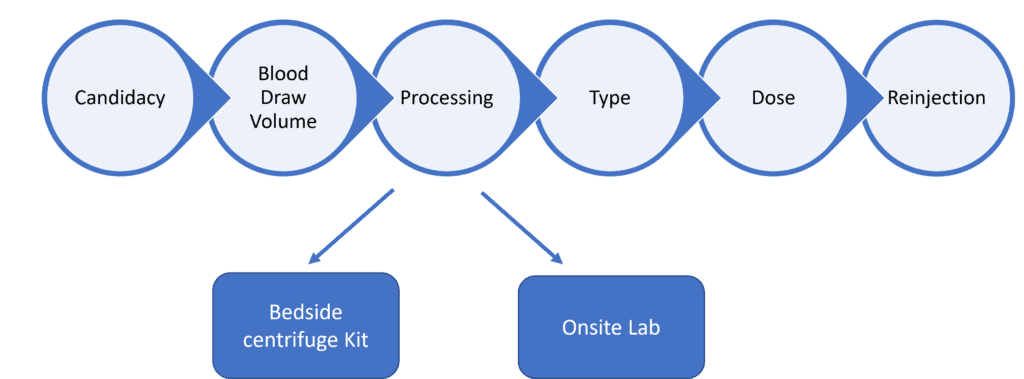
That blood taken from your arm now needs to be processed to make PRP. How that happens is critical. 99% of the time, the doctor has bought a kit that goes into a simple bedside centrifuge. Let’s dig in.
There are literally more PRP kits for sale than I can count. Each produces a completely different PRP product. While I’ll get into type and dose next, some of these kits produce junk PRP and some produce high-quality PRP. How would you know? More on that in a minute.
The other way PRP is processed is through an onsite lab. This could be a very bad or good thing. For example, on the bad side, an improperly run and supervised on-site lab may introduce bacterial contamination or make a bad PRP product. Having said that, a properly supervised and run lab can produce better quality PRP products in more variety than any PRP kit on the market. In fact, when clinics are highly advanced, like those in the Regenexx network, they can no longer easily use kit-based systems, as their PRP needs are way too sophisticated for what bedside kits can produce. We also spend serious resources to make sure the labs at our affiliate sites are properly run and supervised.
Type
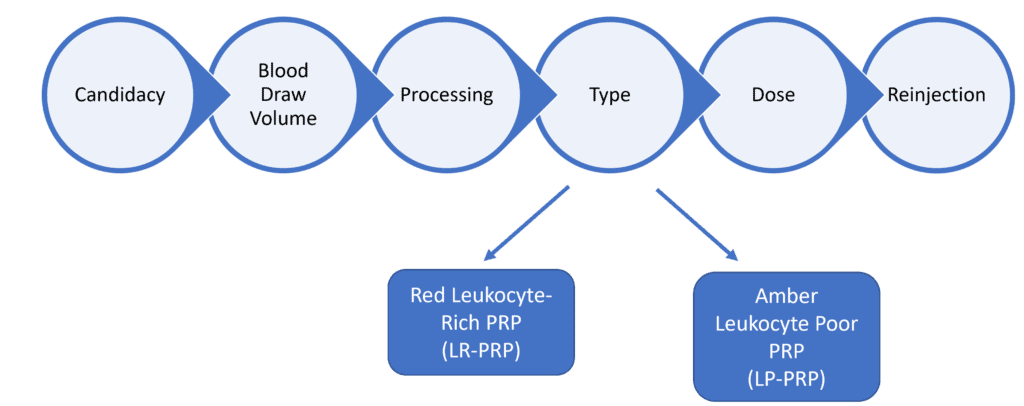
There are two main types of PRP and you can tell them by their color-red and amber. Red PRP contains lots of white and red blood cells and is called “Leukocyte Rich” (LR-PRP). Amber PRP has few white and red blood cells, so it’s called “Leukocyte Poor” (LP-PRP).
The workhorse of modern PRP use is the amber LP-PRP. Why? While the research bounces back and forth on this one, right now, we have more evidence that amber LP-PRP is more effective for common everyday uses like knee arthritis and tendon problems. However, every rule in medicine has an exception. For the injection of spinal discs (and NOT other areas in the spine), high-dose LR-PRP, based on recent research is likely safer because it helps fight the bacteria that could cause a nasty side effect called discitis.
So unless you’re getting your disc injected, you want the PRP to be amber in color.
Dose
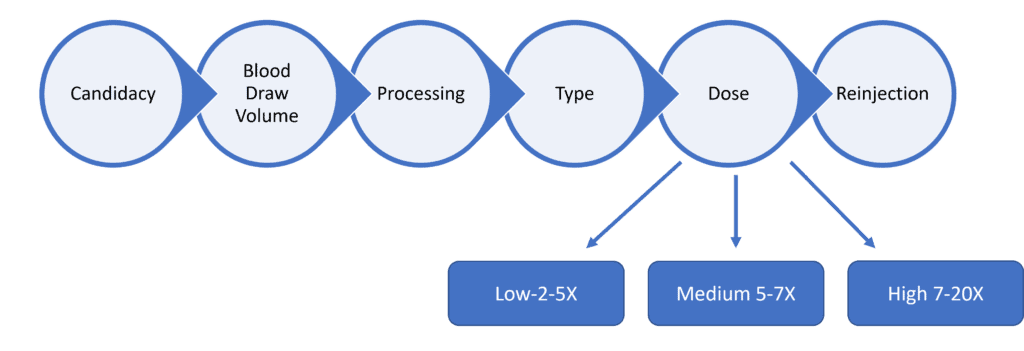
There is nothing in medicine that gets away from the concept of dose. Meaning, if you give the patient the right dose, they get better. If you give the wrong dose, there is no effect. PRP is NO EXCEPTION.
We have tested the concept that the dose of PRP needed is age-dependent numerous times. Meaning younger patients can get by with lower doses. Older patients need much higher doses. How do I know this?
Take our recent published study on tenocytes (tendon cells). When we exposed young tenocytes to PRP they maxed out their ability to heal at low concentrations. However, when old tenocytes were exposed to PRP, the ability to heal was stimulated by a direct dose-response relationship. In other words, the higher the PRP concentration, the more lab-based evidence of healing we observed.
Hence, if you’re young (under the age of 35), you probably don’t need to worry about the PRP dose. However, if you’re middle-aged or older, this is a VERY BIG DEAL that can make the difference between a failed and successful treatment. How high should that dose be?
Based on our published research, if you’re older, this is what we recommend:
- 35-50’s-7-10X PRP
- 50’s-70’s-14X PRP
- 70’s or older-20X PRP
The problem? Few commercially available kits can come close to reliably creating PRP concentrations at these high doses. That’s why at Regenexx, we have always used on-site labs.
Reinjection

Where the PRP is placed is CRITICAL. Meaning if you want to promote healing in a specific structure, you MUST get the PRP accurately inside that structure. Hence, you can produce the best PRP on earth, but if you botch this last part, it isn’t going to help the patient.
There are a number of categories here:
- Simple Blind Injections—This means the doctor just pokes the needle in the general vicinity of where it needs to go without using imaging guidance. This is BELOW the current standard of care.
- Simple Ultrasound-guided Injections—The doctor uses an ultrasound machine to guide the needle into an easy to access space like the inside of the knee joint (intra-articular).
- Complex Ultrasound-Guided injections—The doctor is able to use ultrasound to perform more complex injections into specific tendons and ligaments.
- Complex Dual Modality Imaging Injections—The doctor uses both ultrasound and fluoroscopy (x-ray guidance) to be able to perform complex injections in places where ultrasound has poor imaging abilities.
Ideally, you want a clinic that can use dual-mode imaging and that knows how to use that to place the PRP anywhere it needs to go in the body. Be a bit careful here, as some places have both of these modalities, but don’t know how to use them at a high level.
At Regenexx, we only accept and train providers who are in those last two categories (complex ultrasound and/or dual-modality). Why? They have the best chance of helping the patient recover.
Summary
I hope you’ve gained the ability now to separate the poor quality clinics that are not a good value from the high-quality clinics that can deliver a much better product. If you don’t want to deal with all of this complexity, just choose a Regenexx clinic from the “Find a Doctor” link above as I have already done this homework for you. Having said that, there are high-quality clinics outside of our network as well, which is why I have included this breakdown so that you can find the gems in your community. Regrettably, many of those are NOT the big orthopedic clinic chains or the sports medicine clinics that take care of your favorite team. In fact, many of those places deliver lower to mid-range care. They’re more likely to be smaller private clinics.
The upshot? Being a consumer of high-quality healthcare these days takes lots of homework. I hope this guide to high-quality PRP injections helps you find a clinic that has all of the tools needed to help you recover!

If you have questions or comments about this blog post, please email us at [email protected]
NOTE: This blog post provides general information to help the reader better understand regenerative medicine, musculoskeletal health, and related subjects. All content provided in this blog, website, or any linked materials, including text, graphics, images, patient profiles, outcomes, and information, are not intended and should not be considered or used as a substitute for medical advice, diagnosis, or treatment. Please always consult with a professional and certified healthcare provider to discuss if a treatment is right for you.